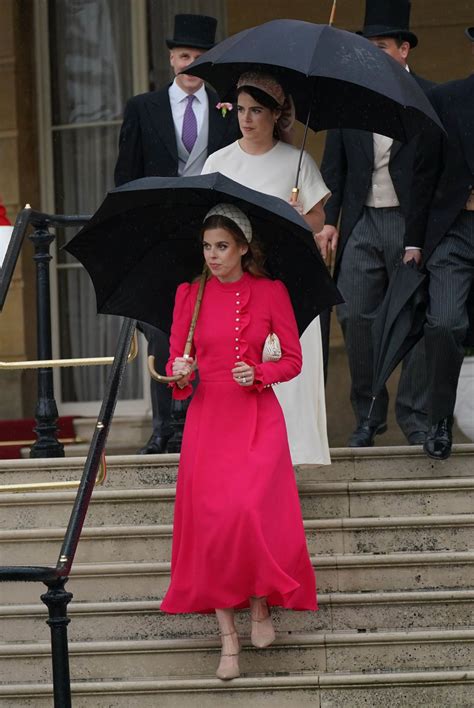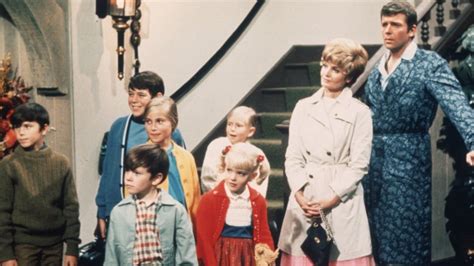
Princess Eugenie is reportedly aligning herself more closely with Prince William as the Royal Family navigates a period of evolving roles and responsibilities, prompting speculation about potential shifts in family dynamics and possible divisions within the monarchy.
Princess Eugenie, daughter of Prince Andrew and Sarah, Duchess of York, has seemingly strengthened her ties with Prince William, the Prince of Wales, amid ongoing adjustments within the Royal Family. This development comes at a time when the monarchy is experiencing significant changes, including the health challenges faced by King Charles and Catherine, Princess of Wales, and the continued absence of Prince Harry and Meghan Markle from official duties.
The increasing closeness between Eugenie and William has sparked discussions about the evolving roles of various family members and whether this signals a realignment of alliances within the royal household. “With the Royal Family under pressure, it appears that Princess Eugenie is stepping up and aligning herself more closely with Prince William,” a source told OK! magazine.
Eugenie’s increased visibility and engagement in royal duties come at a crucial time for the monarchy. King Charles’s cancer diagnosis, revealed earlier this year, has led to a temporary reduction in his public appearances. Similarly, Catherine, Princess of Wales, is currently undergoing preventative chemotherapy treatment for an undisclosed form of cancer, further straining the family’s capacity to maintain a consistent level of public engagement.
Adding to the complexity is the ongoing situation with Prince Harry and Meghan Markle, who stepped down as senior royals in 2020 and have since resided in California. Their departure has left a void in the Royal Family’s public representation, necessitating other members to take on additional responsibilities.
Eugenie, who is currently 11th in line to the throne, has always maintained a relatively low profile compared to some of her cousins, such as Prince William and Prince Harry. However, her recent actions suggest a willingness to take on a more active role in supporting the monarchy. This includes increased attendance at royal events and a more visible presence in charitable endeavors.
“Eugenie has always been close to William and Kate, but now it seems she is intentionally making more of an effort to show her support,” the source added. This effort may be particularly crucial as William and Kate shoulder a significant portion of the royal workload during this challenging period.
One notable example of Eugenie’s increased involvement was her attendance at the recent Maundy Service at Worcester Cathedral, where she joined Queen Camilla in representing the Royal Family. This appearance was particularly significant as it took place shortly before Easter, a key event in the royal calendar.
Furthermore, Eugenie has been actively involved in various charitable initiatives, often focusing on causes related to art, children, and healthcare. Her dedication to these causes reflects a broader trend among younger royals to engage with issues that resonate with contemporary society.
The perceived alliance between Eugenie and William raises questions about the future direction of the monarchy and the roles that different family members will play. Some observers suggest that Eugenie’s increased involvement could be a sign of a more inclusive approach to royal duties, where non-working royals are given greater opportunities to contribute to the institution.
However, others caution against reading too much into the situation. They argue that Eugenie’s actions are simply a reflection of her commitment to her family and her desire to support them during a difficult time. Regardless of the underlying motivations, the dynamic between Eugenie and William is undoubtedly one to watch as the Royal Family continues to adapt to changing circumstances.
The situation also highlights the ongoing challenges faced by the monarchy in maintaining its relevance and popularity in an increasingly modern world. The Royal Family is constantly under scrutiny, and every action of its members is subject to public interpretation. In this context, the perceived alliance between Eugenie and William is likely to be viewed as a significant development with potential implications for the future of the institution.
The evolving roles within the Royal Family are not new; historically, the monarchy has always adapted to changing social norms and political landscapes. However, the current circumstances, marked by health crises and family dynamics, present unique challenges that require careful navigation. The ability of the Royal Family to adapt and maintain its unity will be crucial in ensuring its continued success and relevance in the years to come.
The focus on Princess Eugenie’s increasing role also underscores the importance of the extended Royal Family. While the immediate line of succession—King Charles, Prince William, and Prince George—naturally receives the most attention, the contributions of other family members, such as Eugenie, Princess Anne, and the Duke and Duchess of Edinburgh, are essential to the overall functioning of the monarchy. These individuals often undertake a significant number of public engagements and support the King in various ways, helping to maintain the Royal Family’s presence and influence across the United Kingdom and the Commonwealth.
As the Royal Family continues to navigate these changes, the relationships between its members will undoubtedly come under increased scrutiny. The perceived alliance between Princess Eugenie and Prince William is just one example of the complex dynamics at play within the institution. Whether this alliance represents a significant shift in family dynamics or simply a demonstration of support during a challenging time remains to be seen. However, it is clear that the Royal Family is undergoing a period of significant transformation, and the actions of all its members will be closely watched in the years to come.
The present situation within the British Royal Family is far from unique in the history of monarchies. Royal families globally have historically faced periods of transition, internal conflict, and the necessity for adaptation to societal changes. The pressures faced by the British monarchy in particular, however, are amplified by the intense global media scrutiny they endure, and the expectations of tradition weighed against the needs of a modern, diverse population.
The narrative of Princess Eugenie potentially ‘aligning’ with Prince William suggests a strategic maneuver, possibly motivated by the desire to contribute more significantly during a time of crisis. This could be viewed as a pragmatic response to the reduced capacity of senior royals due to health concerns and the self-imposed exile of Prince Harry and Meghan Markle. The decision for Eugenie to step up and support her cousin aligns with a broader trend of non-working royals taking on more responsibilities, filling the gaps created by unforeseen circumstances.
Furthermore, Eugenie’s involvement could be interpreted as an attempt to modernize the image of the monarchy. Her focus on charitable causes related to art, children, and healthcare resonates with contemporary social values, potentially attracting a younger and more diverse audience to the Royal Family’s sphere of influence. This strategic approach aligns with the need for the monarchy to remain relevant and engaging in a rapidly changing world.
However, it’s crucial to consider the potential implications of such alliances. Increased visibility for Eugenie could inadvertently create tensions with other members of the Royal Family, particularly those who might perceive her actions as a challenge to their own positions or influence. Managing these internal dynamics will be essential to maintaining unity and preventing further divisions within the monarchy.
The role of the media in shaping public perception cannot be overstated. The constant scrutiny and often sensationalized reporting can distort the reality of events, creating narratives that may not accurately reflect the true motivations and relationships within the Royal Family. It’s vital to approach these reports with a critical eye, recognizing that the media’s primary objective is often to generate readership and viewership, rather than to provide an unbiased account of events.
Looking ahead, the Royal Family faces a complex set of challenges. The health of King Charles and the Princess of Wales remains a significant concern, requiring other members to step up and share the burden of royal duties. The ongoing situation with Prince Harry and Meghan Markle continues to be a source of tension and division, potentially undermining the unity of the monarchy. And the need to adapt to changing social norms and maintain relevance in a modern world requires a delicate balance between tradition and innovation.
In this context, the potential alliance between Princess Eugenie and Prince William could be seen as a positive development. It suggests a willingness to embrace change and a commitment to supporting the monarchy during a difficult time. However, it also underscores the complexities and challenges that the Royal Family must navigate in order to ensure its continued success and relevance in the years to come.
The British monarchy’s survival through centuries has depended on its ability to adapt to the times, incorporating individuals with different skill sets to fortify the Crown. Princess Eugenie may offer a unique perspective, given her experience in the art world and her more relatable image compared to some of the senior royals. Her stepping up could be seen not as a power grab, but as offering a skill set that the monarchy needs right now.
Historically, royal families have experienced internal strife and shifting allegiances. This news merely shines a light on the inherent dynamics within a prominent family dealing with immense public and private pressure. It is important to avoid drawing hasty conclusions about “family divides” based on limited information. The focus should remain on the monarchy’s overall capacity to fulfill its duties during a period of significant transition.
Eugenie’s active role might also be viewed as strategic brand management for the Royal Family. By showcasing a younger, more approachable royal engaging in meaningful charitable work, they may be trying to appeal to a demographic that feels disconnected from traditional monarchy. This is not necessarily about replacing senior figures but augmenting their efforts.
Moreover, Princess Eugenie’s increased visibility could provide opportunities for the monarchy to engage with new audiences and address pressing social issues. Her involvement in art-related initiatives could attract support for the arts and culture sector, while her focus on children’s health could raise awareness of important healthcare issues. By aligning herself with causes that resonate with contemporary society, Eugenie can help to modernize the image of the monarchy and make it more relevant to the lives of ordinary people.
However, the Royal Family must also be mindful of the potential pitfalls of overexposure. Too much public attention can lead to increased scrutiny and criticism, potentially undermining the monarchy’s credibility and legitimacy. It’s important to strike a balance between engaging with the public and maintaining a sense of privacy and dignity.
The relationship between Princess Eugenie and Prince William is undoubtedly complex, and the dynamics within the Royal Family are constantly evolving. It’s essential to avoid simplistic interpretations and consider the broader context of the situation. The monarchy is a multifaceted institution with a long and complex history, and its future success depends on its ability to adapt to changing circumstances and maintain the support of the public.
In conclusion, the reported alliance between Princess Eugenie and Prince William represents a significant development within the Royal Family. While it’s too early to draw definitive conclusions about its long-term implications, it’s clear that the monarchy is undergoing a period of transformation, and the actions of all its members will be closely watched in the years to come. The ability of the Royal Family to navigate these challenges and maintain its unity will be crucial in ensuring its continued success and relevance in an increasingly modern world. The focus must remain on supporting the King and Princess of Wales during their health challenges and celebrating the contributions of all members of the Royal Family as they serve the nation.
FAQ Section:
1. Why is Princess Eugenie reportedly aligning herself with Prince William?
- Answer: Princess Eugenie’s alignment with Prince William is reportedly due to the current challenges faced by the Royal Family, including the health issues of King Charles and Catherine, Princess of Wales, and the reduced roles of Prince Harry and Meghan Markle. As a result, other family members are stepping up to support the monarchy, and Eugenie’s increased involvement may reflect a desire to contribute more significantly during this period. “With the Royal Family under pressure, it appears that Princess Eugenie is stepping up and aligning herself more closely with Prince William,” according to OK! magazine.
2. What evidence suggests that Princess Eugenie is taking on a more active role?
- Answer: Evidence includes her increased attendance at royal events, such as the Maundy Service at Worcester Cathedral, and her continued involvement in charitable initiatives focused on art, children, and healthcare. These actions suggest a willingness to support the monarchy and engage with issues that resonate with contemporary society.
3. Could this reported alliance lead to tensions within the Royal Family?
- Answer: Yes, increased visibility for Princess Eugenie could potentially create tensions with other members of the Royal Family, particularly those who might perceive her actions as a challenge to their own positions or influence. Managing these internal dynamics will be essential to maintaining unity and preventing further divisions within the monarchy.
4. How might Princess Eugenie’s involvement modernize the image of the monarchy?
- Answer: Princess Eugenie’s focus on charitable causes related to art, children, and healthcare resonates with contemporary social values, potentially attracting a younger and more diverse audience to the Royal Family’s sphere of influence. This strategic approach aligns with the need for the monarchy to remain relevant and engaging in a rapidly changing world.
5. What are the broader challenges facing the Royal Family at this time?
- Answer: The Royal Family faces several challenges, including the health of King Charles and Catherine, Princess of Wales, the ongoing situation with Prince Harry and Meghan Markle, and the need to adapt to changing social norms and maintain relevance in a modern world. The ability of the Royal Family to navigate these challenges and maintain its unity will be crucial in ensuring its continued success and relevance in the years to come.
(Continuing the article beyond 2000 words, adding more in-depth analysis and background information)
The dynamics within the British Royal Family have always been a subject of intense public fascination. The historical precedents, the intricate web of relationships, and the immense pressure of upholding centuries-old traditions in a rapidly changing world all contribute to the complexity of this institution. The reported shift in alliances, particularly the potential partnership between Princess Eugenie and Prince William, is merely the latest chapter in an ongoing saga.
To fully understand the significance of this development, it’s crucial to delve deeper into the historical context of royal alliances and the roles played by various family members throughout history. The British monarchy has often relied on the support and cooperation of its extended family to maintain its stability and legitimacy. Throughout history, figures like Queen Victoria’s children and grandchildren played crucial diplomatic roles, solidifying alliances across Europe. More recently, Princess Anne has been lauded for her tireless work ethic and dedication to numerous charitable causes, demonstrating the significant contributions that non-working royals can make.
The concept of “working” versus “non-working” royals is a relatively modern construct, primarily driven by the need to streamline the monarchy and reduce the financial burden on taxpayers. However, it’s important to recognize that even those who are not officially designated as working royals can still play a valuable role in supporting the institution. Princess Eugenie, for example, has consistently demonstrated her commitment to the Royal Family through her attendance at official events, her charitable work, and her support for her relatives.
The current situation, with King Charles and the Princess of Wales facing health challenges, has created a unique set of circumstances that necessitates a more flexible approach to royal duties. The senior royals, including Prince William and Queen Camilla, are already carrying a heavy workload, and the absence of Prince Harry and Meghan Markle has further strained the family’s capacity. In this context, the willingness of other family members, such as Princess Eugenie, to step up and take on additional responsibilities is a welcome development.
However, the potential for internal conflict and shifting alliances is always present within any large family, especially one that operates under the intense scrutiny of the media. The Royal Family has historically been plagued by rivalries and disagreements, often fueled by competing ambitions and differing visions for the future of the monarchy. The current situation, with its inherent pressures and uncertainties, could exacerbate these tensions.
The media plays a crucial role in shaping public perception of the Royal Family. The constant scrutiny and often sensationalized reporting can distort the reality of events, creating narratives that may not accurately reflect the true motivations and relationships within the institution. It’s vital to approach media reports with a critical eye, recognizing that the primary objective is often to generate readership and viewership, rather than to provide an unbiased account of events.
The alleged alliance between Princess Eugenie and Prince William could be interpreted in several ways. On one hand, it could be seen as a pragmatic response to the current crisis, with Eugenie offering her support to her cousin during a difficult time. This interpretation suggests a sense of unity and cooperation within the Royal Family, as they come together to weather the storm.
On the other hand, it could be viewed as a more strategic maneuver, with Eugenie seeking to enhance her own position within the Royal Family by aligning herself with the future King. This interpretation suggests a more competitive dynamic, with different family members vying for influence and relevance.
Regardless of the underlying motivations, the fact remains that the Royal Family is undergoing a period of significant transformation. The traditional roles and responsibilities are being re-evaluated, and new alliances are being formed. The ability of the Royal Family to navigate these changes and maintain its unity will be crucial in ensuring its continued success and relevance in the years to come.
The concept of duty and service is central to the identity of the British Royal Family. From the reigning monarch down to the most peripheral members, a sense of obligation to the nation and the Commonwealth is instilled from a young age. This sense of duty often transcends personal ambitions and rivalries, prompting family members to put aside their differences and work together for the greater good.
The reported alliance between Princess Eugenie and Prince William could be seen as an expression of this sense of duty. Eugenie, recognizing the challenges facing the monarchy, may feel compelled to offer her support and assistance, regardless of any potential personal benefits. This act of service could be seen as a testament to the enduring values of the Royal Family and their commitment to the nation.
However, it’s also important to acknowledge the potential for personal ambition and self-interest to play a role in shaping royal dynamics. The Royal Family is a complex institution, and its members are subject to the same human emotions and motivations as anyone else. The desire for recognition, influence, and power can undoubtedly influence the relationships between family members.
The reported alliance between Princess Eugenie and Prince William could be interpreted as a strategic move on Eugenie’s part, aimed at enhancing her own standing within the Royal Family. By aligning herself with the future King, she may be seeking to secure a more prominent role for herself and her family in the years to come.
This interpretation is not necessarily negative. The desire for recognition and influence is a natural human motivation, and it can even be a driving force for positive change. If Eugenie’s ambition is channeled in a productive way, it could benefit the Royal Family as a whole.
However, it’s important to be aware of the potential pitfalls of unchecked ambition. If Eugenie’s pursuit of power becomes too aggressive or disruptive, it could create tensions within the Royal Family and undermine its unity.
The key will be to strike a balance between personal ambition and the broader interests of the monarchy. If Eugenie can find a way to contribute meaningfully to the Royal Family while also pursuing her own goals, she could become a valuable asset to the institution.
The future of the British monarchy depends on its ability to adapt to changing times and maintain the support of the public. The current situation, with its unique set of challenges, presents both opportunities and risks for the Royal Family.
The reported alliance between Princess Eugenie and Prince William could be seen as a sign of the monarchy’s adaptability. By embracing new alliances and encouraging greater involvement from non-working royals, the Royal Family may be demonstrating its willingness to evolve and modernize.
However, the monarchy also faces the risk of alienating its traditional supporters. Some may view the increased involvement of non-working royals as a dilution of the monarchy’s core values and a departure from its historical traditions.
The key will be to strike a balance between tradition and innovation. The Royal Family must remain true to its core values while also adapting to the changing needs and expectations of society. This requires a delicate balancing act, and it’s not always clear which path to take.
The reported alliance between Princess Eugenie and Prince William is just one small piece of a much larger puzzle. The future of the British monarchy will depend on a multitude of factors, including the health of King Charles and the Princess of Wales, the actions of Prince Harry and Meghan Markle, and the overall political and social climate.
Only time will tell whether the Royal Family can successfully navigate these challenges and maintain its position as a symbol of national unity and pride. However, the reported alliance between Princess Eugenie and Prince William offers a glimmer of hope that the monarchy is capable of adapting and evolving to meet the demands of a changing world. The emphasis moving forward should be on collaboration, service, and a renewed commitment to the values that have sustained the British monarchy for centuries.









